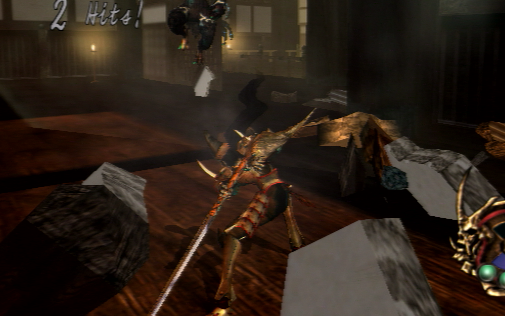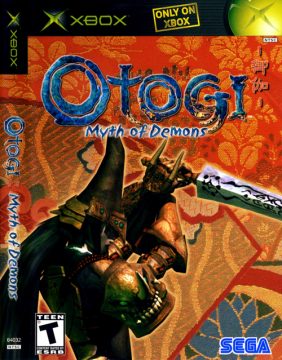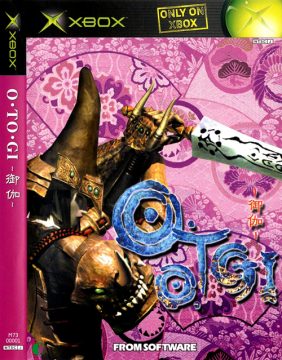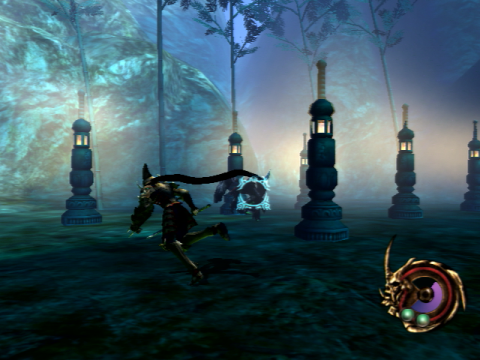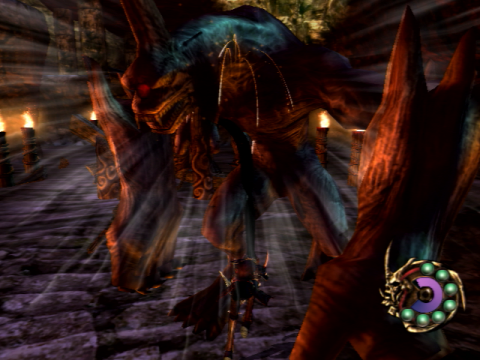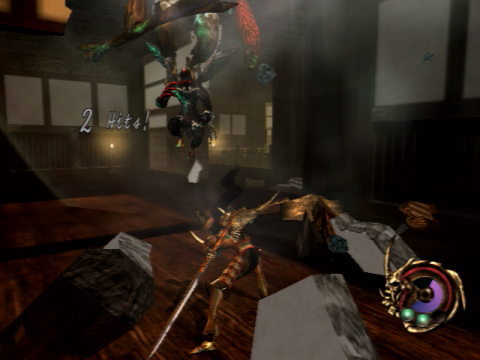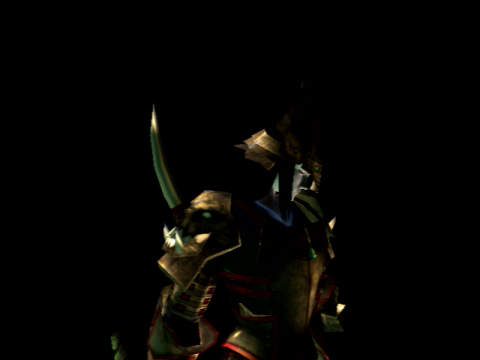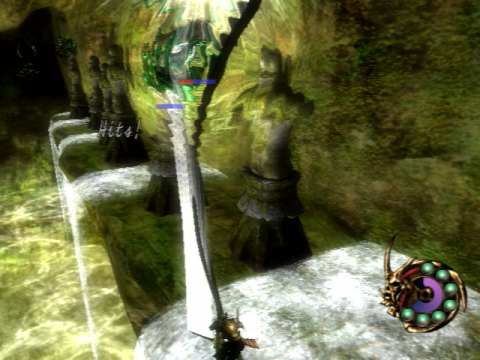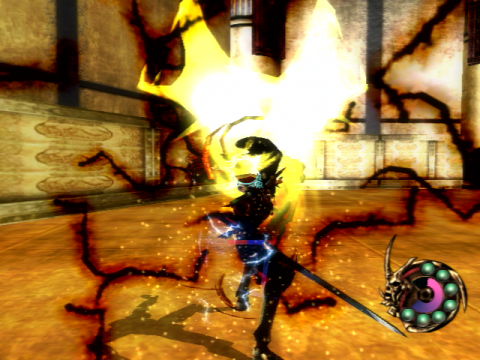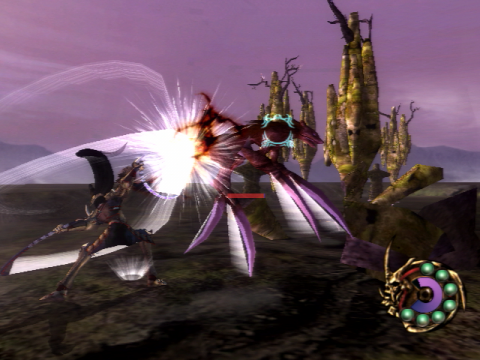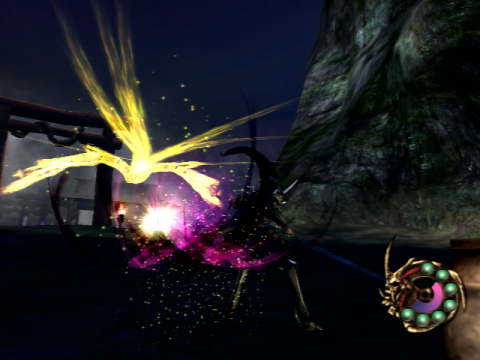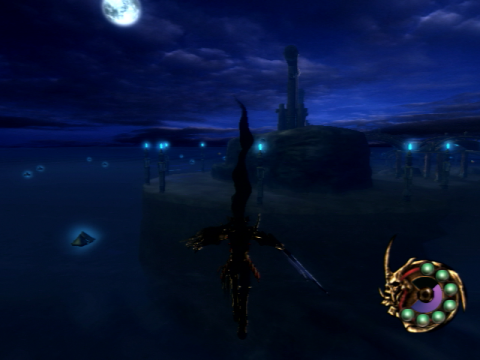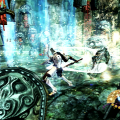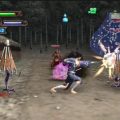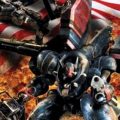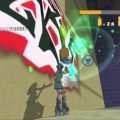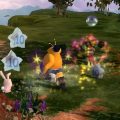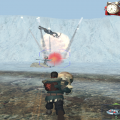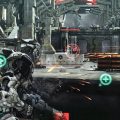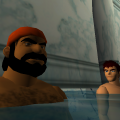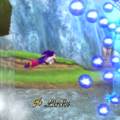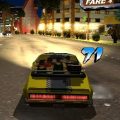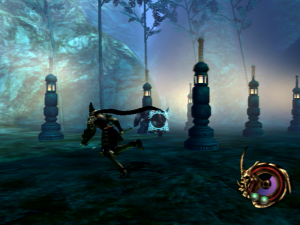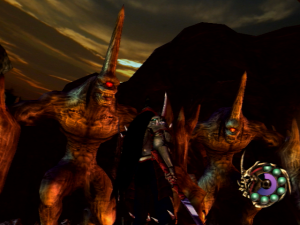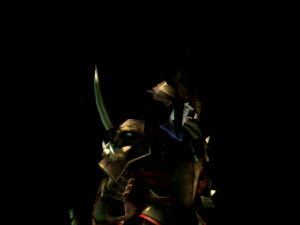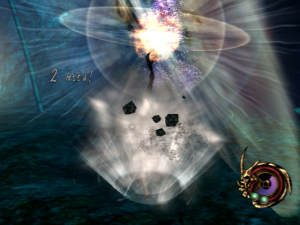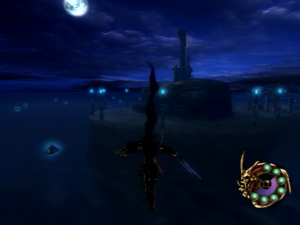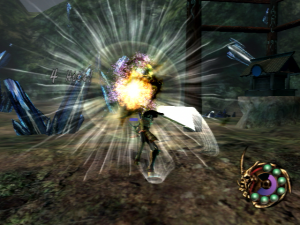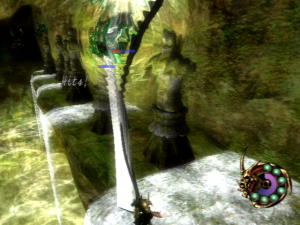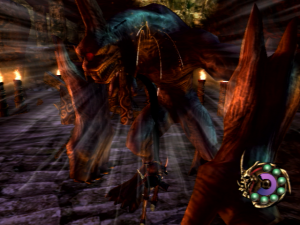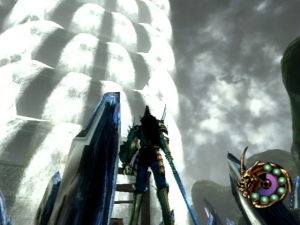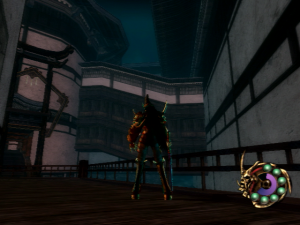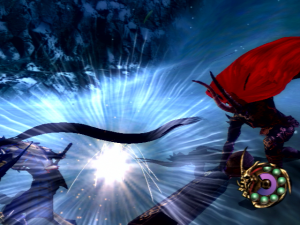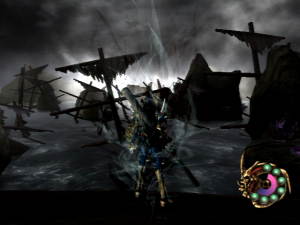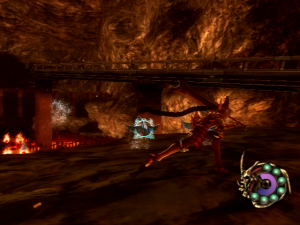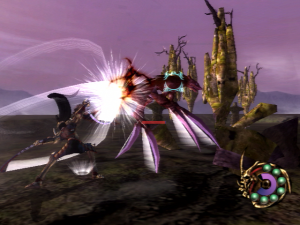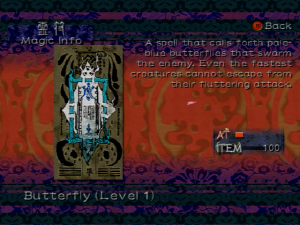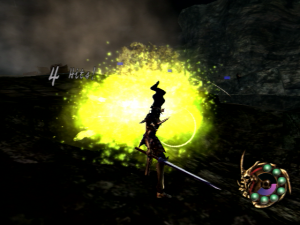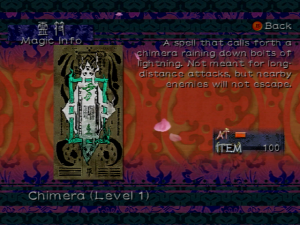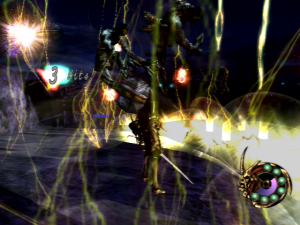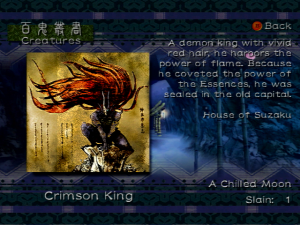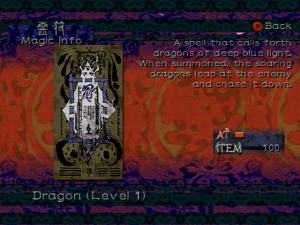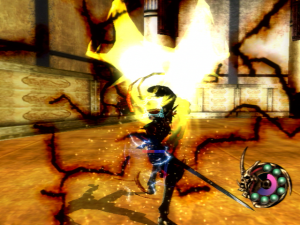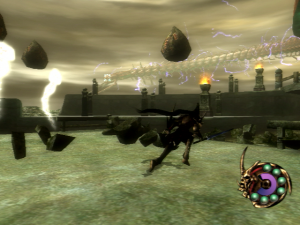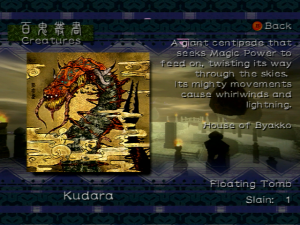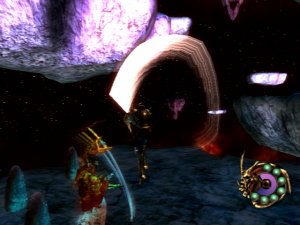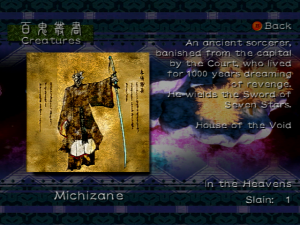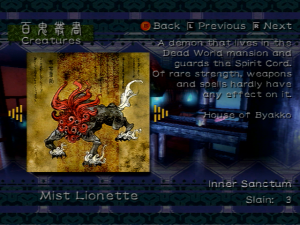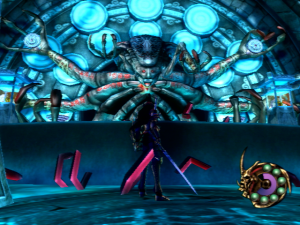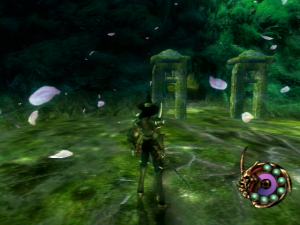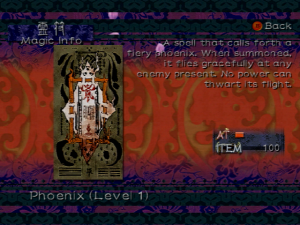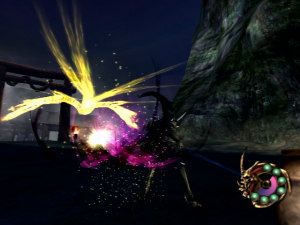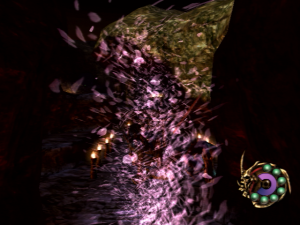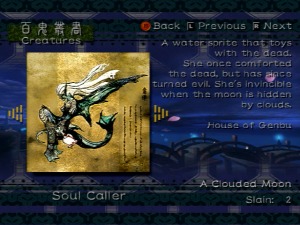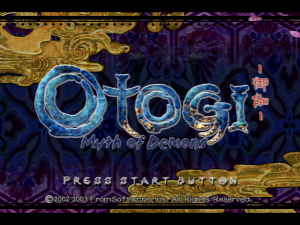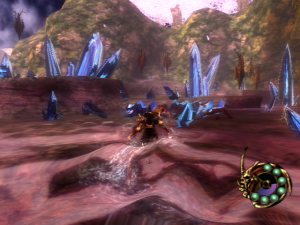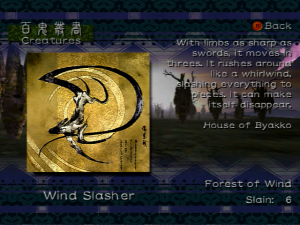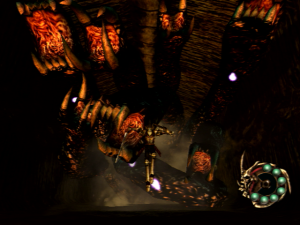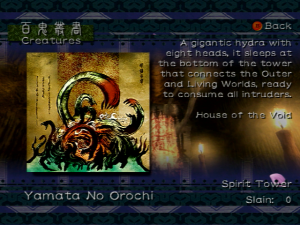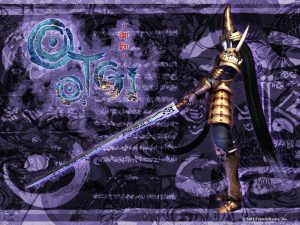- Otogi: Myth of Demons
- Otogi 2: Immortal Warriors
Otogi, as a series, was one of From Software’s most wonderful creations. Having released such incredible and groundbreaking titles such as the King’s Field series, the hugely popular Armored Core games, Shadow Tower: Abyss, and as of late Demon’s Souls and Dark Souls, one might think their experience in the pure hack-and-slash genre was lacking from seeing subpar efforts such as Ninja Blade. However, the Otogi games are extremely well-made and very satisfying to play, and Otogi 2 happens to be the most beautiful game ever seen on the original Xbox. Not only that, this is yet another From Software game in which the famous Sword of Moonlight appears, and it is deadly.
Released in North America half a year after its Japanese release, in the middle of 2003, Otogi: Myth of Demons was loved by critics. It won EDGE’s 2003 Game Awards as the Graphical Achievement of the Year, and many heaped praise on its musical score. Like many critically acclaimed niche titles, however, it didn’t sell very well, and moved around 130,000 copies, 80,000 of those North American. This same pattern was repeated with the release of its sequel in North America almost a year after the Japanese release, with love from critics but a lukewarm reception in the market, a paltry 40,000 North American copies. One man even sent a letter to Electronic Gaming Monthly, curious on how short EGM’s review of the game was, and received a response from the editor-in-chief at the time, Dan Hsu: “As good of a game Otogi 2 is, we still have to acknowledge that relatively few people want to read about it.”
This sentiment was reflected in sales, and it was quite obvious after the generation ended that the PlayStation 2 audience would have been more receptive of Otogi. On the other hand, the Playstation 2 simply could not have handled the game as it was, and it would have looked significantly worse. In fact, the beauty of Otogi itself is a compelling case for the hardware superiority the Xbox had over the Playstation 2. This isn’t to say the games are just graphically advanced, however – a deceptively simple combat system with depth lurking underneath, an amazing soundtrack using all kinds of traditional Japanese instruments, a mythologically inspired storyline and art style and incredible animation all work together to create a unique world that did things few people see in a hack and slash title.
From Software is a master at crafting atmosphere, often pairing beautiful worlds with haunting and omnipresent melodies – for example, the distinctive sound of a traditional Japanese string instrument while cherry blossom petals fill the screen and the player dashes through the air as Raikoh. He gracefully lands with his long hair trailing like an extension instead of rigidly modeled to his head, a relatively new technique in that generation of 3D games. The particle effects, in quantities far above the level of anything on the PlayStation 2, allowed for a mystical and rich world. The environmental destruction was not only a fantastic way of allowing the player to feel the power of the being he was controlling and add extra depth to the levels – it also was accounted for as an actual mechanic.
When Raikoh used a Heavy Attack and slammed his weapon into a flying demon, it did not just split apart midair, or remain unflinching. The sword burst with power and, as if hit by a giant hammer, the victim spun at incredible speed directly into the ground or whichever direction was opposite the player. This meant that when the demon hit the ground, the sheer force of their body striking terrain did extra damage. Nearly everything that wasn’t a wall or the ground was destructible, and many stages had traditional Japanese structures, simple rocks and even entire destructible buildings. This meant it was possible to simply hit a demon into a situation where not only would it take damage from the impact, but also from the subsequent falling debris.
Levels that took place indoors often included walls through which you could Heavy Attack a demon, or a large stack of pots and boxes that burst into hundreds of pieces when destroyed. There was even a stage in the first Otogi with soft terrain that allowed the player to create craters in the ground with the bodies of demonic birdmen. Explosive eggs that detonated like they were filled with dynamite at the slightest touch could be used strategically, as one could send an enemy careening across the room and into a group of these eggs. Some enemies were even explosive themselves, meaning that if one played their cards right, they could slash at an enemy with light attacks, and then finish them off with a heavy attack that turned them into an explosive missile, setting off a chain reaction of exploding enemies that sometimes slowed the actual framerate of the game down – an extremely satisfying result that was a spectacle to behold.
Together, the light and heavy attacks, movement options, and the ability to cast a magic spell with the X button worked well. One could double jump and use the airdash, and if one wished they could airdash through the entire level, although this alone will not clear a stage. It’s possible to cast magic in midair, and attack animations change based on whether you’re airborne or grounded. The fluidity and freedom of this system makes controlling the main character (and characters, as of Otogi 2) a joy.
It’s worth noting that the mythology and main character are all inspired by the legends and stories surrounding Minamoto no Yorimitsu, and this Minamoto was often with his retainers, the Shitennou (Four Heavenly Kings). In Otogi 2, Usui Sadamitsu, Sakata no Kintoki, Watanabe no Tsuna and Urabe no Suetake are playable characters – their names simply shortened to Sadamitsu, Kintoki, Tsuna and Suetake, although they possess very different physical forms to the ones depicted in the legends. All of these people, by the actual historical accounts, lived during the Japanese period of Heian. Their loyalty to Raikoh Minamoto is the very picture of the relationship between a samurai and their lord, willing to sacrifice their lives at the drop of a hat. Abe no Seimei, another facet of these stories and originally a male onmyoji – a specialist in magic, occult and the divine – appears in Otogi 2 as Seimei, a female sorcerer. The demons that appear in the Otogi games are also so familiar in Japanese culture that more often than not, a player even slightly familiar with these legends, or any Japanese media at all, will recognize recurring themes or monsters present. This means that even a glance at some of these monsters, paired with one’s knowledge, helps tell the player what this monster will do or what its weaknesses are. This brings us to the games themselves, so let’s take a look at Otogi: Myth of Demons.
The story begins with a short, scrolling introduction of the world of Otogi. The Imperial Court, which ruled this feudal Japan-era world for a thousand years, fell victim to disaster. The seal between the demon world and the human world was broken, and a tempest of evil leveled all before it.
The player then sees the main star of the Otogi games, Raikoh Minamoto, for the first time. He is surrounded by a dark void, presumably in an afterlife of sorts. An ethereal female voice tells Raikoh that he has been resurrected for a purpose, and makes it clear that she is the one guiding you and is responsible for giving you the magical power to walk the earth once again.
This is directly linked to a game mechanic, as your magic meter. This is displayed by the purple bar on the lower right, which constantly drains as you use magic and simply exist, making it a sort of time limit – although killing monsters allows you to regenerate magic, and obtain or sustain it through picking up special orbs. Once Raikoh runs out of magic power, the powers that were given to you disappear – the player cannot cast magic anymore, and if you take any damage Raikoh will not heal. He cannot even dash, or walk on water, as those abilities are granted to him by possessing magic. However, he will not instantly die. His health starts draining slowly instead, and if the player doesn’t complete the level in time to outrace this life drain he will die, his body presumably falling apart.
Speaking of dashing, that brings the conversation to movement. Raikoh can dash through the air using the left trigger paired with the thumbstick. If one wished, they could remain airborne through an entire level. His ability to double jump and then dash multiple times after gaining height is essential to traversing some obstacles of the game, as well. Not only can he double jump, dash, and universally use light and heavy attacks, he can also lock on to enemies and use an uppercut move.
By holding the right trigger down, and pressing B, one can uppercut with every weapon and stay in midair. There are more specific movesets for each individual weapon, though. Dashing through the air and then smacking a demon into a wall by using a heavy attack is a satisfying and refreshing feeling; the controller shakes with the sheer impact Raikoh hits a demon with, and shakes again when the demon creates a small crater in the ground. It’s an extremely effective way of displaying Raikoh’s sheer power.
There are also unlockable weapons. From a staff to dual axes, dual-ended halberd and even a deadly fanblade alongside Raikoh’s sword Soul Shrine, there are a number of playstyles available if one wishes. Some add attributes or lower them based on their purpose – and as said before, the Moonlight Blade is indeed available. However, like many of the other weapons, one must fulfill certain stage requirements simply to obtain it; namely, to free every single soul in all 28 stages, which is no small feat. It’s so powerful, however, that it’s completely obvious why this was done.
On top of these tools, Raikoh is also capable of using magic. Raikoh’s magic is chargeable, and executed by pressing the X button – the longer one holds down the button, the more powerful the spell. One can also do this in midair. There are also status effects Raikoh can suffer from; Frost, red, blue and black flames, Silence and Jyubaku. Frost drains MP, the Flames drain life, Jyubaku cuts stats and Silence prevents spell casting.
There is a system of weaknesses and strengths, as well, relating to the magic spells Raikoh can cast. Every single demon and spiritual being in Otogi is part of an elemental House. Four of the houses, usable by Raikoh in his magic, have opposites. If one magic fights magic from another House that is not opposing it directly, there is no advantage to either side. Each of the houses are based on the five elements of Japanese philosophy. Chi, meaning ‘world’, represents a resistance to change, and things that are solid. Sui, or ‘water’, represents the formless and flowing aspect of this world. Ka, or ‘fire’, is the heat, passion, desire and force of life and movement. Fū, being ‘wind,’ is the representation of freedom, openness, and expansion. Lastly, there is Kū, which can mean “void” or “heaven.” This is a blanket term for things beyond a regular life; this often refers to things made of pure energy, such as the spirit and creativity, and is the highest of elements, seeing as tuning into this power is said to be connecting to the world’s creation and the creative energy that surrounds it.
The Byakko house, or Chimera, is that of ‘Fū.’ The Chimera spell Raikoh can use, on one hand, calls down lightning in a close range ring around him. Like all other magic spells, it has three levels of power, each more powerful than the last. The most powerful versions of each magic spell are colored yellow, at Level 3. Like most of the weapons, one must complete special, optional tasks such as completing a stage in a certain amount of time.
On the other hand, residents of the house of Byakko that happen to be demons will often have lightning-related powers. The opposite of this house, Sōryū, or Dragon, is what Raikoh would do well to use against demons of the House of Byakko. However, this means one takes much more damage. It’s sometimes worth the tradeoff if a magic spell corresponding to the demons Raikoh fights is chosen and equipped, because even though Raikoh’s magic does less damage because the demon is from that House, Raikoh takes half the damage he normally would from their magic attacks.
The Sōryū house is that of ‘Chi.’ The Dragon spell Raikoh can use is a chargeable spell that releases destructive dragons of energy that knock back and damage everything in their path, several of the dragons homing in on whatever direction Raikoh fired them in or what he targeted. Residents of the house of Sōryū often cast destructive magic, or fly.
The House of Suzaku, or Phoenix, is that of ‘Ka.’ When Raikoh uses this particular spell, a flaming phoenix is fired at whatever Raikoh has targeted, or if he hasn’t targeted anything, in the direction he’s facing. Residents of the house of Suzaku are often related to the power of flame, and fire. The opposing House to this is the House of Genbu.
The Genbu house, that of the Butterfly, is the power of ‘Sui.’ Raikoh’s spell calls forth a cloud of butterflies that swarm an enemy, or can be used to take care of crowds and build up really high combos. Most of the residents of this house are water sprites, sea serpents, and spirits that died at sea. The Cyclops also fall into this house, despite spewing fireballs.
Lastly, there is the House of the Void, the power of ‘Kū.’ Raikoh has no relation to this house, and the only inhabitants of this house in the first Otogi are enemies. Thus, Raikoh cannot use any of this magic, and many of the members of the House of the Void that Raikoh fights are extremely powerful. The powerful sorcerer Michizane occupies this House.
As the story progresses, it’s revealed that Raikoh is from a clan of executioners, and his possession of the clan’s most powerful sword Soul Shrine is due to him stealing the sword after refusing to execute his father, and fleeing Kyoto, the capital. Not only that, Michizane himself is the one responsible for destroying the seal that led to the invasion of demons in the world of men, and that Raikoh must execute him before he can make matters worse.
Otogi: Myth of Demons is a fantastic game, and worth playing if you own an original Xbox, but it does not come without flaws. For one thing, if Raikoh dashes towards an enemy that has been locked on, he does not dash directly towards the enemy, but rather in their exact direction, without changing altitude (this was fixed in Otogi 2). The second half of the game is a mirror world version of the first half, and although the game is still fun to play at this point, one can’t help but think about alternatives to recycled content. Near the end, Raikoh escapes this mirror world, and the player gets to experience new levels and enemies, which is preferable to the more difficult and dangerous rehashes of stages Raikoh has already completed. One cannot use the D-pad, or any button, to switch the lock-on function to another monster while it’s on. The player must press the right trigger again, and then again, until they find the correct demon they want to attack. This is a minor issue, but it’s still a little annoying. The controls may be a little simplistic for those who’ve played complex and hardcore hack and slash games and want something along those lines, as well. Rarely, the camera has issues getting stuck in walls, but it’s not nearly enough to hamper enjoyment of the game if one ever encounters this. Also, the ‘2nd Play’ feature lacks a little in frills as a New Game+ mode, but is worth playing nonetheless.
The levels of Otogi are also extremely beautiful, and incorporate specific mechanics into their design – for example, a point of land with bridges to a far-off rock over ocean water. It is night, and bright moonlight illuminates the area. However, when clouds obscure the moon, darkness falls upon the entire area, and crossing the bridges is impeded by the spirits of the dead, knocking you every which way to keep you from progressing. Thus, the light of the moon is an indicator to progress further in a stage, although not completely necessary. Walking on water also drains your magic bar very quickly, so one must take care not to fall in the water. There are castles with wooden architecture, stone monuments with moss coverings, volcanic fiery pits, and even a floating graveyard of sorcerers, hovering in the eye of a tremendous hurricane, and all of these levels offer destructible objects for Raikoh to crush with weapons or by bludgeoning a demon so he crashes into them.
Otogi began here, and the love From Software had for Otogi: Myth of Demons was enough to earn it a sequel to expand upon the Minamoto no Yorimitsu mythology. The dissonance of the soundtrack, filled with traditional Japanese instruments, paired with the violence and set to a beautiful and ethereal backdrop creates an atmosphere like no other.
